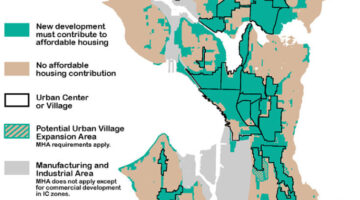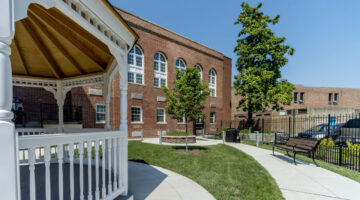Housing Solutions Lab, US
Main objectives of the project
The Housing Solutions Lab, part of the NYU Furman Center, assists small and midsize cities in developing, implementing, and assessing evidence-based housing policies that promote racial equity, enhance access to opportunities, and enhance the long-term health and well-being of residents.
Date
- 2024: En proceso
Stakeholders
- NYU Furman Center
- Robert Wood Johnson Foundation
Location
Country/Region: United States of America
Description
While larger and coastal cities tend to dominate national housing discussions, small and midsize cities—defined as those with populations between 50,000 and 500,000—encounter their own set of intricate housing challenges. These challenges range from disinvestment and concentrated poverty to housing instability and affordability gaps. However, small and midsize cities also present fertile ground for innovation. They often exhibit greater agility and less bureaucratic red tape compared to larger cities, enabling them to more effectively involve higher levels of leadership, gain recognition for promising strategies, and foster trust and engagement within their communities. Nonetheless, they may lack the philanthropic and corporate support enjoyed by larger cities, as well as the necessary staffing, resources, and access to data, best practices, or specialized expertise required to develop and implement effective housing responses. Additionally, the affordability crisis in rental housing disproportionately impacts people of color, who are more likely to be renters, exacerbating existing disparities in homeownership rates between white, Black, and Latino households, which are already pronounced in larger cities and even more pronounced in small and midsize cities.
Recognizing these challenges, the NYU Furman Center established the Housing Solutions Lab—an interdisciplinary team of housing research and policy experts housed within the NYU Furman Center, a collaborative initiative between the NYU School of Law and the Robert F. Wagner Graduate School of Public Service. Through its Local Housing Solutions website and Lab Notes blog, the Lab provides a plethora of housing policy resources, data tools, cases of study and analyses. Furthermore, it facilitates peer learning opportunities for city leaders, furnishes access to local housing and neighborhood data, conducts rigorous research and evaluations, and offers technical assistance to cities striving to achieve their housing policy objectives. Continually seeking opportunities for collaboration, the Lab endeavors to support local government leaders, researchers, and other housing stakeholders in pursuing equitable, evidence-based housing policy goals.
In addition to providing strategies, data, case studies, and other innovative solutions, the Lab spearheads two main initiatives. Firstly, it administers The Peer Cities Network—a year-long program that convenes leaders from small and midsize cities to explore housing policy research, innovative practices, and avenues for achieving local housing objectives. Secondly, it conducts the Housing Solutions Workshop—an intensive three-week training program offered annually to teams of housing leaders from small and midsize cities, equipping participants with the skills necessary to develop comprehensive local housing strategies.







